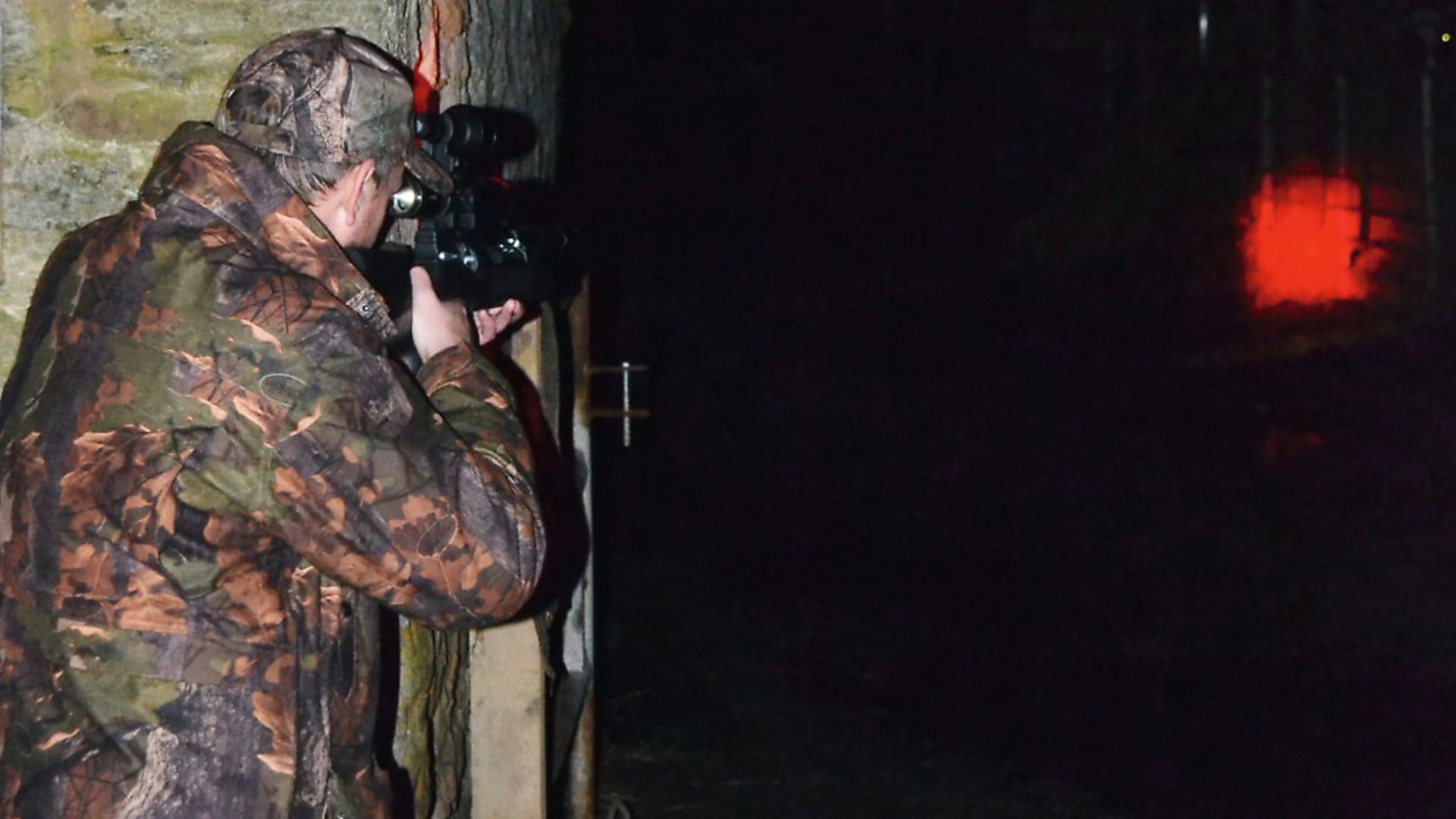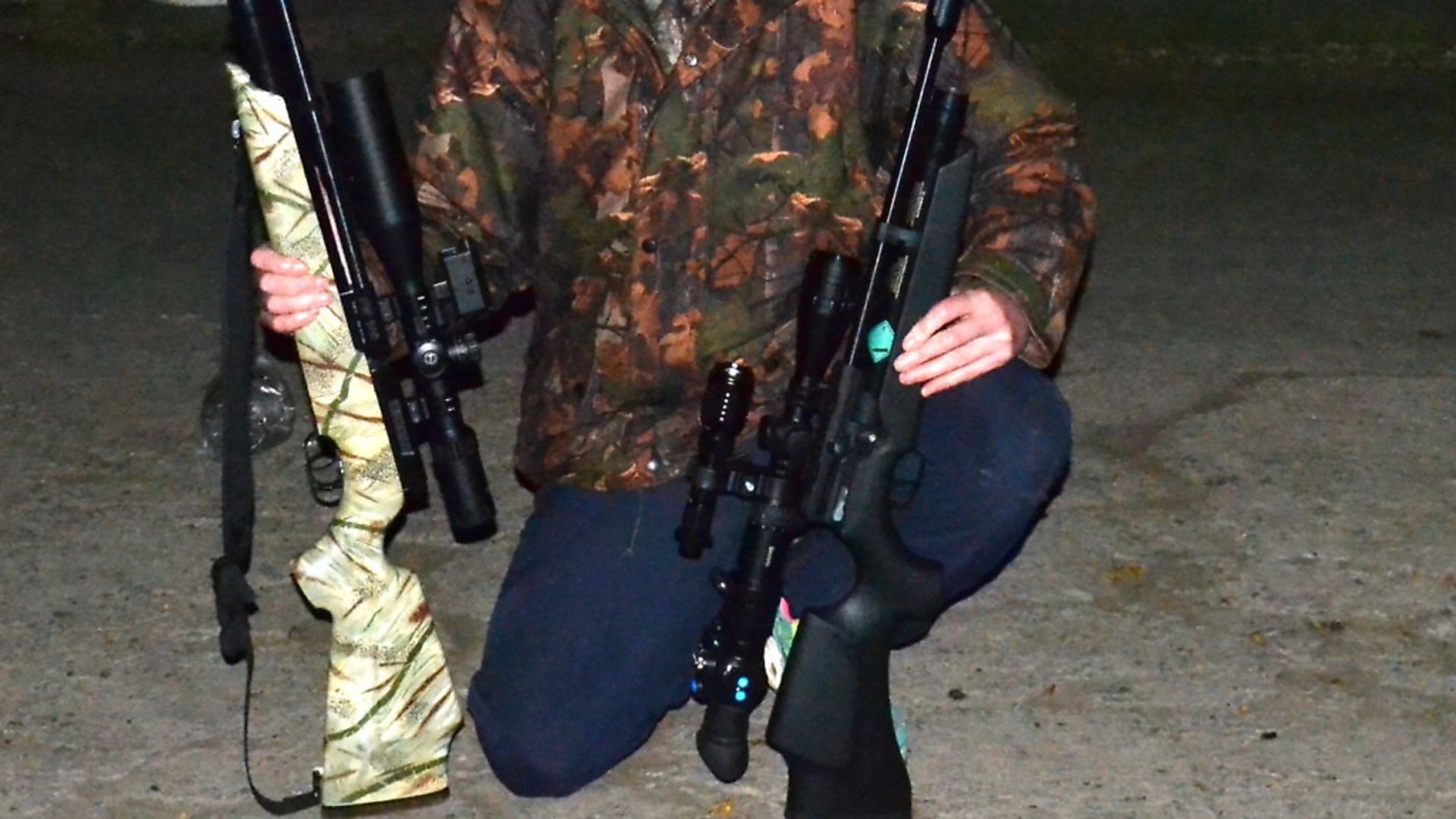Phil shines a light on the mysterious world of hunting after dark
 credit: Archant
credit: Archant
This month, we’re going to have a little look at what is involved in hunting at night. Some people love it, some avoid it, or just simply haven’t ever tried it, but night-hunting is an extremely effective method of targeting species that are out and about after dark. You can look at it similar to stalking, but with a few twists.
Firstly, it is dark, so you cannot see, and the vermin you hunt – rabbits and rats – can, so you’re instantly at a disadvantage. We get round the problem by using an artificial light source, either a standard visible lamp of some sort, or night-vision technology. We’ll start off with the basics because they are the same for both techniques, regardless of the kit you use.
 credit: Archant
credit: Archant
As I said, this is a form of stalking, so all the essentials of fieldcraft need to be followed; you need to be quiet, slow moving, and be a part of the countryside just as much as you do during the day, but with the added difficulty of less background noise and not being able to see. You really need to make more effort than during daylight hunting sessions.
We are using the cover of darkness to approach, instead of camouflage clothing, so we need it to be really dark – no moon and good cloud cover is advisable, and be careful not to silhouette yourself against any distant background light pollution.
In the case of a lamp, you will have to choose either to use a lamp man, to shine the beam and search for targets, while you take the shots, or you will need to get a rifle-mounted lamp if you are going solo. The actual tactic is simple enough, really, I try to stalk along and get myself between the rabbits that should be out feeding in the middle of the field, and the warren itself, to close off their escape route. If they haven’t been lamped much before, they shouldn’t worry too much about a beam of light hitting them, but if they are worried and you’re between them and their warren, they have nowhere to run and will instead often hunker down and try to hide.
 credit: Archant
credit: Archant
Work as a team
After giving a quick scan of the lamp, I turn it off and move closer to any potential targets as quietly as I can, and then stop and flick it back on again. I never move with the beam on if I can avoid it because that will often give the rabbit an idea of your distance and be enough to spook them into running. Instead, I check and turn it back off if I am still not in range, until I am. The light reflects off the rabbits’ eyes so they are pretty visible even when trying to hide, but since they aren’t aware of this, you can often find yourself able to approach a hunkered down bunny extremely closely. If you choose to use a lamp man, he controls the hunt, not the rifleman. The lamp man’s job is to seek out targets and get the rifleman close enough for the shot, so follow his lead. It actually pays to put the most experienced man behind the lamp rather than the trigger, because he will know when he is as close as he can get and it’s time to hand off to the rifleman for the shot. Working in a team like this can be exceptionally effective, but remember you need to stay quiet, so keep talking down to an absolute minimum.
 credit: Archant
credit: Archant
Extremely effective
Night-vision, or NV hunting. is very similar, but you aren’t using a visible beam of light. It relies on an infrared light source that neither we, nor our quarry can see, but can be picked up by the NV unit, so that we can use it to see in the dark. This tactic is extremely effective because the rabbits or rats cannot see anything at all and tend to not be spooked or react in any way. On the other hand, it’s not as easy to scan with a lamp as it is with a narrow field of view NV unit and they can be a lot more expensive than lamps so it comes down to personal preference. If I have a large area and a lot of rabbits to shoot, I choose the lamp, but when I am ratting in a place where I tend not to have to move around much and I only have to scan a limited area, it’s the NV every time for me. I prefer NV add-on units that fit to the rear of your day scope, converting it to a night-hunting combo without the need for a second rifle, or having to switch scopes constantly. Others prefer dedicated night scopes, although these cannot be used during the day and will often require a second rifle to be used, to avoid the hassle of swapping between scopes. With rats you don’t need to move around as much, although I do still stalk around the farmyard every so often. I also like to sit in position overlooking a well-used run, or a feeding area, and wait for the rats to come to me.
 credit: Archant
credit: Archant
Stay safe
One thing I will say about either of these methods is to make sure you know your land well. Learn it during the daylight before you attempt to hunt at night. We are often out in the middle of nowhere at ungodly hours, and a simple trip or fall can become pretty serious very quickly when you are alone. Make sure you have your mobile phone charged and ready, and preferably tell someone where you are going. A flat battery, two broken ankles and a mile crawl to the nearest road or house will not be much fun at any time, but in the middle of winter, when most lamping takes place, it could be life-threatening.
Farmyards are also pretty dangerous places, even during the day, so at night they become almost lethal; heavy machinery, things to trip over, sharp objects waiting to impale you … the list is almost endless, so conducting a proper daylight recce on the yard and all the buildings before you go at night is essential.
 credit: Archant
credit: Archant
Accidents happen
Only twice have I had to end a hunting trip early because of accident or injury, and both came at night while lamping. I once stood on a 6-inch nail, on a board covered in rats’ blood, when I was picking up after a pretty successful evening out. It was dark and I simply didn’t see it until I felt it enter my foot. When you walk into the doctor’s for a tetanus jab and say that you have been around rats’ blood you tend to get funny looks, and the leaflet they give you on Weil’s disease is a pretty harrowing read, so trust me, you want to be very careful when out ratting.
On the other occasion I had a flat tyre on my ATV quad, but being the type to think ahead I had a can of emergency foam tyre-weld handy. It wasn’t until I put it on the valve and turned it on that it exploded in my face and eyes. I had to stagger to the farmhouse blinded, eyes burning and covered in sticky goo to rinse them immediately and seek advice from a local eye infirmary the next day. Both times I was lucky; it could have been a lot worse, but accidents can happen, to me, and to you, so be prepared! This time of year is the time to make sure all your night-hunting kit is in order, the dark nights are closing in fast, but there’s still plenty of sport to be had. See you all next month.
__________________________________________________
Read more from Phil Hardman here...
Hardman’s hunting: Bond of brothers
Win-win technique of hunting
Using pigeon decoys while hunting